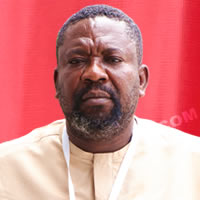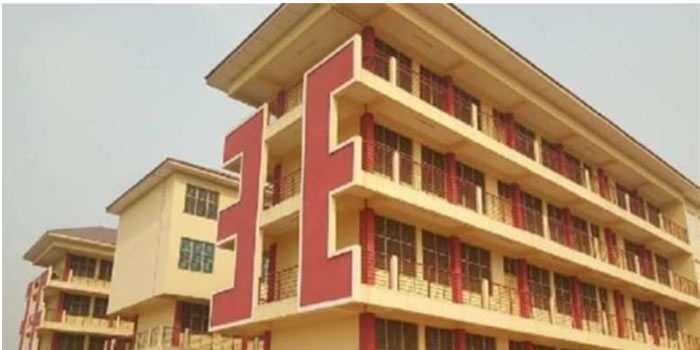

The Bia East District was carved out of the then Bia District in 2012 by Legislative Instrument (LI) 2014 and officially inaugurated on 28th June, 2012 with the administrative office at Adabokrom. The district shares boundaries with the Dormaa West District Assembly to the north, Asunafo North to the north east, La Cote d’Ivoire to the west, and Bia West District to the south west. The district capital, Adabokrom is located 420 km to the northwest of Sekondi-Takoradi (the Regional Capital) and 250km to Kumasi, the nearest commercial centre. The district has a surface area of 874.1 sq km.
Climate (Temperature and Rainfall)
The Bia East District forms part of the wet semi-equatorial climatic zone. The area experiences two main seasons namely wet and dry seasons. The wet season occurs between April and October while the dry season is between November and March.
Mean annual rainfall figures ranges from 1,250 mm to 2,000 mm. The mean annual temperature of the district is between 25.5°C and 26.5°C. The area records high relative humidity figures ranging from 75% - 90% during the wet season to 70% - 80% during the dry season.
The climate of the District is suitable for the growing of various crops particularly both cash and food crops. This is the reason why the district is one of the leading producers of the cash crop like cocoa in Ghana. The good climatic condition provides suitable water table which is good in potable water (boreholes and hand-dug wells) provision in the district. However, the recently changed in the climatic conditions of the district from previously short dry season (harmattan) to almost long dry season has damaging effects on the environment and farm outputs. The heavy and prolonged rains associated with this type of climate adversely affect cocoa harvest (drying of cocoa beans), and aggravates the black pod disease that attacks cocoa. In addition, almost all the roads in the District become unmotorable during the rainy season.
Relief and Drainage
The district forms part of the country’s dissected plateau. The greater proportion of this plateau is between 240m and 300m above sea level.
There are few valleys that do not exceed 150m above sea level.
The district is endowed with a number of rivers and streams, the most important of which is the Bia River. The streams and rivers exhibit a dendritic pattern, which forms the Bia basin. The relief and drainage systems favour the development of fish farming, and cultivation of valley bottom rice, sugarcane and dry season vegetables. Due to the relatively low level of relief in the district, road construction is less difficult and expensive. However, the presence of many rivers and streams in the district also makes road construction at times very difficult and expensive.
Geology And Mineral Deposits
The geology of the Bia East District is a combination of Alluvium, Hornblende Mixed and Upper Birimian. There are also granite rocks and deposit of mineral gold.
Soil Type
The soil in the district is mainly of the ferric acrisols and dystricfluvisols type. The ferric acrisols type of soil covers about 98% of the entire soil in the District, which supports the cultivation of a wide variety of crops including cocoa, coffee, oil palm, plantain, cocoyam and cassava, and other vegetables. It also makes the district to have a comparative advantage in agriculture and agro-processing. Investment in Agriculture is, therefore, an important area of focus in the development of the District.
The presence of mineral deposits in the district has the potential to generate royalties as revenue to the District Assembly as well as create employment for the inhabitants. It also implies that there is going to be influx of people to the district if the mining operation takes off.
Vegetation and Forest Reserve Cover
The District’s vegetation is of the moist semi-deciduous (equatorial rain forest) type. The forest vegetation is made up of many different tree species including wawa (Triplochitonselerexylon), mahogany (Khayainvorensis), esa (Celtis), ofram (Terminaliasuperba), edinam (Entandrophragmaivorensio), onyina (Ceibapetandra), kyenkyen (Antiaris Africana) and odum (Miliciaexelsa) etc.
There is a forest reserves in the district known as the Bia Tributaries and Manson Forest Reserve which is a productive reserve where timber harvesting is done. Occasional bushfires, poaching and encroachment of land are threatening the existence of the reserves. The type of climate has positive impact on the heavy rainfall experiences in the district. However, mechanized farming cannot be practised extensively in the district due to the dense forest cover.
These forest reserves are encroaching by unauthorized farmers, especially for the cultivation of cocoa and plantain and to some extent, overexploitation by loggers. Current forest loss is estimated at 0.8% per annum, a situation that has the potential to deplete the totality of the forest within the fifty years.
The negative implication of the loss of the forest cover is enormous as it has the tendency to reduce amount of rainfall, increase evaporation of surface water, and reduce total agricultural productivity, among many others.
Date Created : 11/18/2017 1:11:11 PM










 facebook
facebook
 twitter
twitter
 Youtube
Youtube
 +233 593 831 280
+233 593 831 280 0800 430 430
0800 430 430 GPS: GE-231-4383
GPS: GE-231-4383 info@ghanadistricts.com
info@ghanadistricts.com Box GP1044, Accra, Ghana
Box GP1044, Accra, Ghana